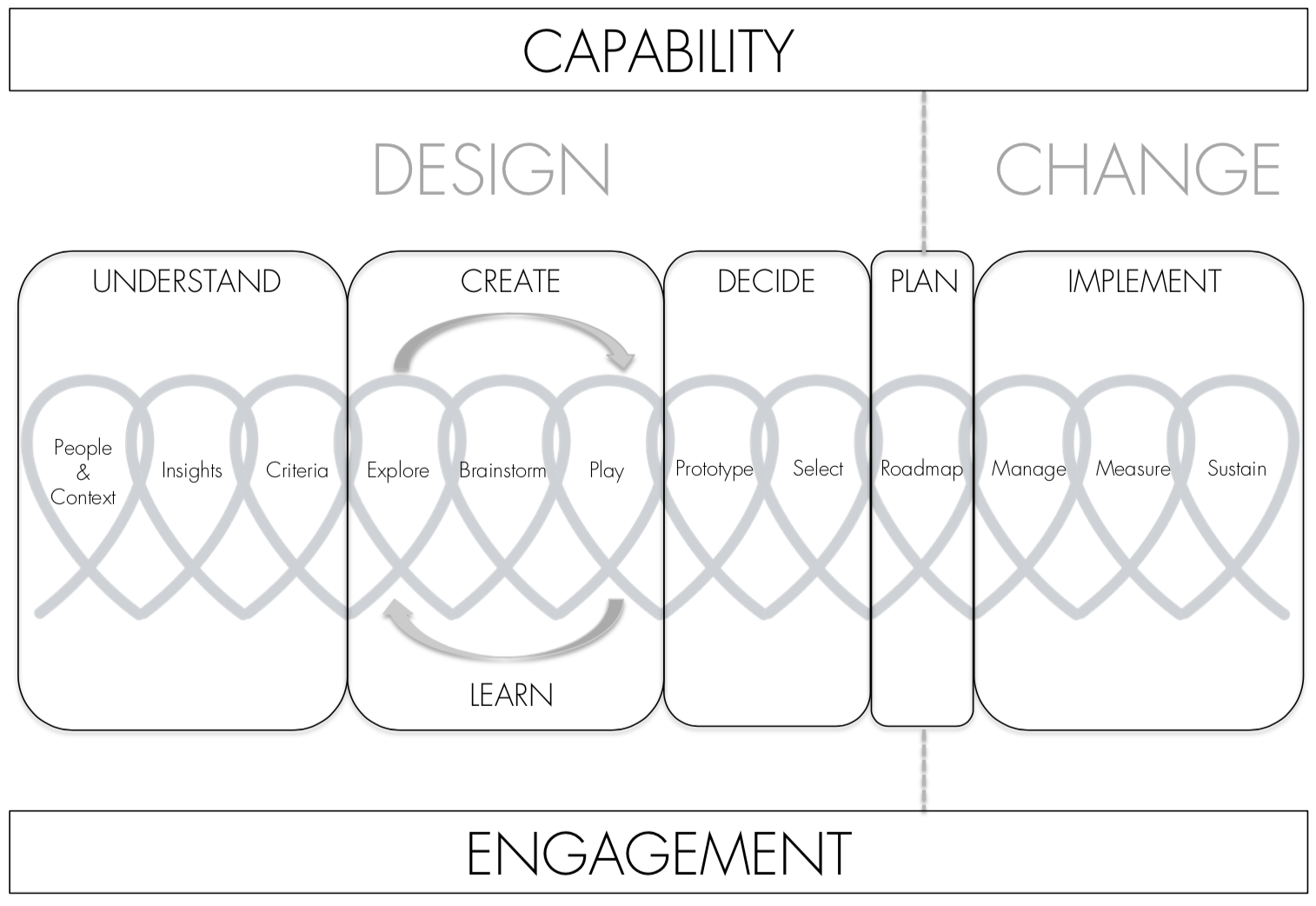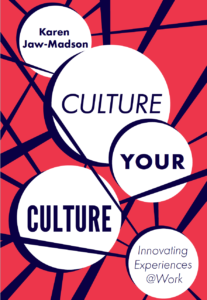Innovating Experiences at Work
Organizational culture isn’t just a hot topic–it’s an untapped asset and potential liability for all businesses. And yet, for all its potential to make or break, few know how to manage cultures with proficiency. In her newly released book, Culture Your Culture: Innovating Experiences @Work, Karen Jaw-Madson provides the much needed, step-by-step, “how-to” for designing, implementing and sustaining culture. Karen is principal of Co.-Design of Work Experience where she focuses on culture and organizational change.
We recently had the opportunity to ask Karen some of our own questions.
Would you give a quick synopsis of DOWE? What is it and how does it work?
Design of Work Experience (DOWE) is a concept and methodology that partners employees and their employer to co-create, implement, and sustain culture. DOWE is comprised of four main components: the combination of DESIGN and CHANGE processes enabled by leveraging and building CAPABILITY and ENGAGEMENT throughout. When you dig deeper, the process is further segmented into 5 phases: UNDERSTAND, CREATE & LEARN, DECIDE, PLAN, and IMPLEMENT. All the phases are organized as a series of iterative learning loops, each with its own specific set of activities.
4 Components of DOWE
Is there one of the four components of DOWE that is more difficult than the others?
The difficulty (or ease) with any aspect of the DOWE process would depend on the individual organization–their current strengths and capabilities, as well as their current context. For example, a company used to constant change may find the change process more familiar than one that has not experienced a lot of change. Another may be dealing with apathy, so engagement may be a challenge, and so on and so forth.

Best Practices to Follow
Given your experience working with different cultures, and different leaders, what are a few of the best practices leaders use in every industry in order to develop a positive corporate culture?
Best practices are often misused. However, The best best practice is for a leader to commit to and dedicate themselves and their organization to cultivating their culture intentionally and on a continuous basis. What’s done should depend on each company’s unique context, and DOWE can help guide them through the process. The other best practice that applies across organizations is to ensure both employees and leadership are engaged stewards of the culture.
Avoid these Pitfalls
On the flip side, what are a few of the common pitfalls leaders often fall into when it comes to culture?
Pitfalls include not giving culture the attention it needs to be a fully leveraged asset to such a degree that it becomes a liability. Another common one comes from misunderstanding what culture actually is—it’s not amenities or poorly written value statements. It comes from lived experience, and it is reflected in all things that have the power to influence behaviors, interactions, and perception.
Speak to someone in middle management who says that she wants to create a positive culture in her group but knows she cannot control the whole company. What steps can she take?
Her own team can become the lab from which change begins in her organization. Begin DOWE in the area within her own scope. Design for extraordinary team dynamics to such a degree that people start to notice. Positive results will come to the attention of those outside her group. Her team can be the example and prototype for change in the broader organization. Even if the rest of the company doesn’t immediately follow, her area will build a reputation for being desirable to top talent, creating the conditions for even more success for her team. She will also build her capability to cultivate culture, which she can take wherever she goes in her career.
Talk about the interrelationship between creativity, innovation, and culture.
 Let’s start with definitions. Creativity is the ability to come up with ideas. Innovation connects ideas to other people, where it is shaped, adopted, and realized. Culture encompasses everything that that has the power to influence behaviors, interactions, and perception within a socially defined entity or institution. To describe their interrelationship in a few words, creativity, innovation, and culture work together as enablers of one another. Like connected gears turning simultaneously, they can both influence and be influenced by the others (for better or worse). One could argue that they share a co-dependency.
Let’s start with definitions. Creativity is the ability to come up with ideas. Innovation connects ideas to other people, where it is shaped, adopted, and realized. Culture encompasses everything that that has the power to influence behaviors, interactions, and perception within a socially defined entity or institution. To describe their interrelationship in a few words, creativity, innovation, and culture work together as enablers of one another. Like connected gears turning simultaneously, they can both influence and be influenced by the others (for better or worse). One could argue that they share a co-dependency.
For more information, see Culture Your Culture: Innovating Experiences @Work.

